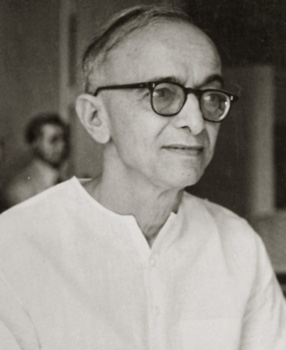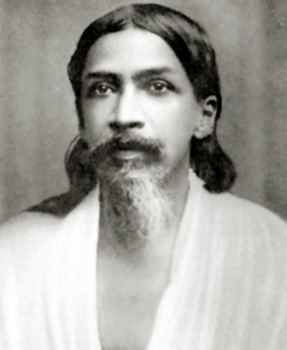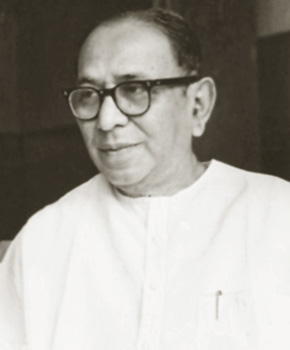 Nationalist Writers in Modern Gujarati Literature flourished in the post Gandhian era. The nationalist and humanistic trends in Gujarati literature continued because the established writers maintained continuity, and younger writers inspired by Gandhiji entered the field. Many of them were active in the freedom struggle, and, like their immediate predecessors, their writings, fresh with expressions, idioms, and language texture, also embodied a dream of free India and a better world. They can be called the precursors of new Gujarati writing.
Nationalist Writers in Modern Gujarati Literature flourished in the post Gandhian era. The nationalist and humanistic trends in Gujarati literature continued because the established writers maintained continuity, and younger writers inspired by Gandhiji entered the field. Many of them were active in the freedom struggle, and, like their immediate predecessors, their writings, fresh with expressions, idioms, and language texture, also embodied a dream of free India and a better world. They can be called the precursors of new Gujarati writing.
One of them was Umashankar Joshi (1911-88), who was instantly recognized as a promising poet with his Vishwashanti (1931) and longish Khandakavya, followed by several poetry collections, such as Nishith (1939) and Abhijna (1967), all bearing the stamp of poetic excellence, at times showing social awareness. He is also known as a great poet of nature and love. His dialogue-poems Prachina (1944) and Mahaprasthan (1965) show his eagerness to seek new modes of expression. Umashankar`s prolific prose writings include short story collections such as Shravani Melo (1937) and Tran Andhun Be (1938), one-act plays such as Sapna Bhara (1936), and the novel Parkan Janyan (1940). All these works paint intimate portraits of rural life. Akho: Ek Adhyayan (1941) and Klanta Kavi are in-depth studies of the poets Ako and Balashankar. His critical works, reflecting an appreciative and imaginative approach to literary criticism, include Samasamvedan (1948), Shaili ane Swaroop (1960), Nireeksha (1960), and the Sahitya Akademi winner, Kavini Shraddha (1978). Umashankar Joshi brought a fresh approach to all genres in which he wrote and came to be regarded as a literary great who loved all mankind. His monthly magazine, Sanskirti, published writings of established and talented young writers. He remained a live force in Gujarati literature and maintained a spirit of the era until his death. His translations of Abhjnana Shakuntalam and Anttararamacharikam, the Sanskrit plays, are also greatly admired.
 Umashankar`s contemporary Sundaram (1909-90) also started writing under Gandhian and socialist influences, as can be seen in his poetry collections Koya Bhagatni Kadvi Vani (1933), Kavyamangala (1933), Yatra (1951), and others. His poetry also showed concern for the poor and warm sympathy for humankind in general. However, he later turned to the spiritualism of Sri Aurobindo Ghose. Kholki ane Nagarika (1940), Piyasi (1940), Hirakani and Biji Vatu, and others are Sundaram`s short story collections, marking a point of departure from Dhoomketu. Kholki ane Nagarika was considered very bold and controversial. Sundaram also authored Dakshinayan (1942), as well as a travelogue and a biography of Sri Aurobindo. Sundaram`s critical works include Arvachin Kavita (1946) and the Sahitya Akademi winner Avalokana (1962), among others. He is considered an eminent writer of the Gandhian era.
Umashankar`s contemporary Sundaram (1909-90) also started writing under Gandhian and socialist influences, as can be seen in his poetry collections Koya Bhagatni Kadvi Vani (1933), Kavyamangala (1933), Yatra (1951), and others. His poetry also showed concern for the poor and warm sympathy for humankind in general. However, he later turned to the spiritualism of Sri Aurobindo Ghose. Kholki ane Nagarika (1940), Piyasi (1940), Hirakani and Biji Vatu, and others are Sundaram`s short story collections, marking a point of departure from Dhoomketu. Kholki ane Nagarika was considered very bold and controversial. Sundaram also authored Dakshinayan (1942), as well as a travelogue and a biography of Sri Aurobindo. Sundaram`s critical works include Arvachin Kavita (1946) and the Sahitya Akademi winner Avalokana (1962), among others. He is considered an eminent writer of the Gandhian era.
Another poet in the line was Sneharashmi (1903-90), who was also a freedom fighter. Lyricism, delicate sentiment, captivating rhythm, and concern for the poor marked his poems collected in Arghya, Panghat, and so on. He was the pioneer of the Japanese haiku poetry in Gujarati. His prose writings include the short story collections Tutela Taar and Gata Saopalav, Hiranan Latkavian, the novel Antarpat, and his autobiography, Safalyatanun. Sneharashmi`s poetry, marked by a warm, all-embracing quality, is highly regarded.
 Belonging to the same period was the poet Sundarji Betai (1905-89). He did not participate in the freedom struggle, but Gandhian vision is the hallmark of his poetry, which is generally serious and gentle in tone, having the touches of his teacher Narasingh Rao`s diction and mastery of Sanskrit meters. His poetry collections include Jyoti Rekha, Shangali, Shravani Jharmar, and others, his main contributions being sonnets, khandakavyas, and songs. His Sadgat Chandrasheelane is regarded as a notable elegy to his wife. Betai`s critical works, based on Sanskrit poetics, include Amod. His translations include Henry David Thoreau`s Walden, four cantos of the Mahabharata, and the verse rendering of the Bhagavad Gita.
Belonging to the same period was the poet Sundarji Betai (1905-89). He did not participate in the freedom struggle, but Gandhian vision is the hallmark of his poetry, which is generally serious and gentle in tone, having the touches of his teacher Narasingh Rao`s diction and mastery of Sanskrit meters. His poetry collections include Jyoti Rekha, Shangali, Shravani Jharmar, and others, his main contributions being sonnets, khandakavyas, and songs. His Sadgat Chandrasheelane is regarded as a notable elegy to his wife. Betai`s critical works, based on Sanskrit poetics, include Amod. His translations include Henry David Thoreau`s Walden, four cantos of the Mahabharata, and the verse rendering of the Bhagavad Gita.
Poet Badarayan (1905-63), a contemporary of Betai, was also Narasinghrao`s student and influenced by him. But both regarded Narasinghrao as their source of inspiration and developed their own styles, distinct from one another. Badarayan`s output, collected in Kedi (1944), was meager, but his sonnets and songs of subjective nature and rare sensibility place him among the important poets of the period.
Mansukhlal Jhaveri (1907-81), deeply rooted in classical Sanskrit poetry, was a Gandhian poet of that era. Phooldol (1935), Anubhuti (1959), and others are poetry collections containing rhythmic poems about love, nature, and God, with rhythm and master over his medium. He attempted contemporary themes and forms in Anubhuti but felt more comfortable in his well-trodden path.Jhaveri had solid understanding of Eastern and Western concepts of literary criticism, as can be seen in his critical works, Thoda Vivechanlekhe (1944), Paryeshana (1953), Kavyavimarsh (1962), and so on. He wrote a history of Gujarati literature for the Sahitya Akademi, and his translated works are Abhijnana Shakuntalam, Hamlet, and Othello. Jhaveri`s creative and critical works, bearing the mark of his individuality and scholarship, place him high among Gujarati writers.
In contrast to most of the writers of this period writing both in prose and in verse, Darshak confined himself to prose. His fiction and nonfiction writings reflect the Gandhian spirit throughout. His most famous novels are Bandhan ane Mukti (1939), Deepnirvan (1944), Jher to Peedhan Chhe Jani Jam (1952), and others, which show his concern for humanity, history, and philosophical thinking and give full expression to his life`s ideals of love, peace, and harmony imbibed from Gandhiji, but without sacrificing the structural aspects of the novel as a literary form. Darshak is an exponent of the idea novel in Gujarati. His critical writings are contained in Wagishwarinan Karnaphoolo (1985). He is a particular favorite among readers looking for higher life values.
Nationalist writers in modern Gujarati literature thus have made significant contributions to the realm of Gujarati literature.



















